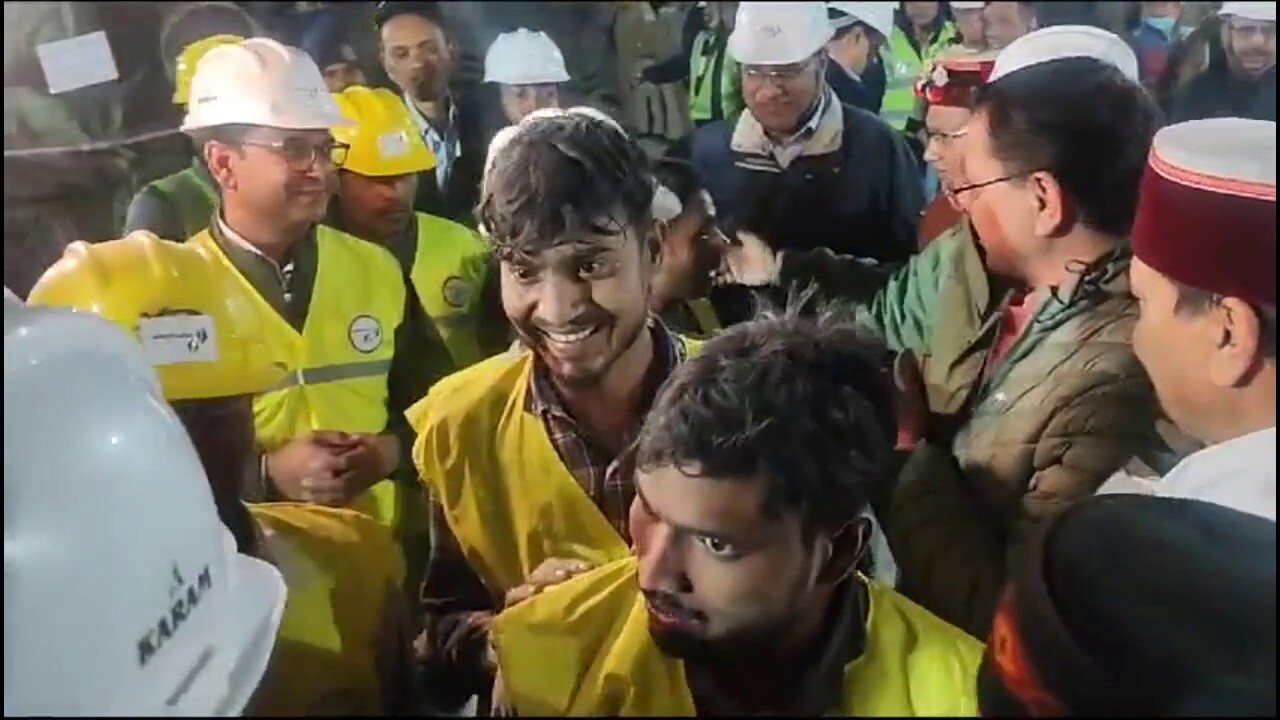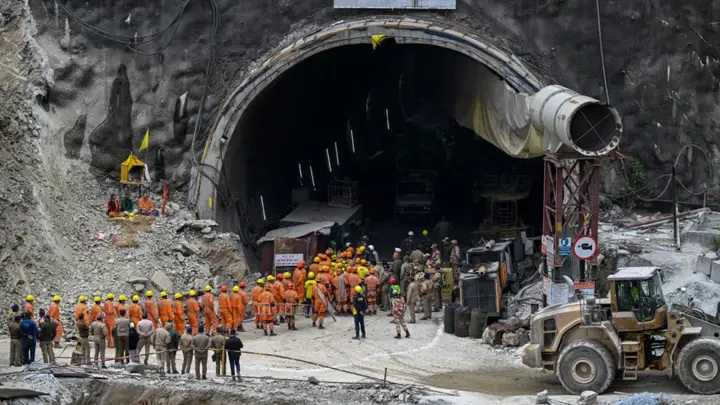All 41 Indian Tunnel Workers Safely Pulled To Freedom By 'Rat Miners'
All 41 Indian tunnel workers safely pulled to freedom by 'Rat Miners' after a 17-day ordeal under mountainous rock and debris.
Author:Hajra ShannonReviewer:Paula M. GrahamNov 30, 20233.7K Shares151.6K Views

All 41 Indian tunnel workers safely pulled to freedom by 'Rat Miners'after a 17-day ordeal under mountainous rock and debris.
When heavy machinery broke down trying to break through the debris trapping 41 workers in a tunnel in the Indian Himalayas, authorities called in a group of people whose profession is effectively banned in the country - "rat-hole mining."
While augur machines managed to horizontally drill through nearly three-quarters of the debris, it fell on half a dozen miners adept at burrowing in tight spaces to reach the trapped workers on Tuesday.
Rescuers successfully pulled out the workers in wheeled stretchers through a wide pipe that was pushed through the debris after a 17-day ordeal.
Unconventional Heroes In Tunnel Rescue
"It was a difficult task, but for us nothing is difficult," said a beaming Firoz Qureshi, one of the miners, standing with his fellow workers outside the tunnel, their faces patched with white dust after overnight drilling.
The "rat miners" started working late on Monday after a second drilling machine also broke down with 15 meters out of 60 meters still left to reach the trapped men.
They worked in two teams of three each, with one person drilling, the second collecting the debris, and the third pushing it out of the pipe. They said they had worked for more than 24 hours.
Controversial Technique Plays Key Role
"Rat-hole" mining is a hazardous and controversial method used extensively in the northeastern state of Meghalaya to extract thin seams of coal before an environmental court in 2014 banned the practice because of environmental damage and many fatalities.
Some of the miners involved in the rescue operation said they were not involved in coal mining and got their training in Delhi.
The name comes from its resemblance to rats burrowing pits into the ground. The pits are sized just enough for the workers, often children, to descend using ropes or ladders to extract coal - often without safety measures and proper ventilation.
Dramatic Breakthrough Despite Setbacks
At least 15 miners were killed in one such "rat hole" mine in Meghalaya after being trapped for more than a month until January 2019 - one of the many tragedies in the state where rights groups say 10,000 to 15,000 have died in such mines between 2007 and 2014.
Rescuers in India pulled all 41 trapped tunnel construction workers to safety, ending their harrowing 17-day ordeal stuck beneath piles of mountainous rock and rubble.
The workers — who were trapped beneath a collapsed road tunnel in the Uttarkashi district of India's Uttarakhand after a portion of it collapsed during a Nov. 12 landslide — were pulled out via a 3-foot-wide diameter passageway made of welded pipes inserted through the rubble.
The rescue brings a dramatic end to an operation fraught with setbacks and delays. Rescuers previously struggled to cut through the rocky debris with heavy drilling machinery breaking down on numerous occasions.

Exhausted Workers Emerge Safely
On Friday, a U.S.-made Auger machine broke down irreparably, and workers began manual drilling using hand-held drilling tools over the weekend as another drilling machine was set up in its place.
Rescuers successfully broke through to the workers Tuesday.
The Indian Air Force's Chinook helicopter, an enormous twin-rotor aircraft, reached the Uttarkashi district earlier and assisted in airlifting the trapped workers to the hospital.
Dozens of ambulances were also spotted outside the entrance to the tunnel, while locals and family members of the trapped workers gathered.
Shortly after the collapse, rescue personnel were able to establish contact with the workers and they were able to send them oxygen, food, and water. More than a dozen doctors, including psychiatrists, were present at the accident site, monitoring their health.
A U.S.-made auger machine was also used to penetrate 195 feet horizontally through the mountainous terrain, but it broke down on Saturday and could not be repaired.
A new machine was also set up at the site in order to drill vertically, but it is understood that the machine was not needed as the manual drilling proved successful.
Final Words
The successful rescue of all 41 trapped tunnel construction workers in India marks the end of a harrowing 17-day ordeal.
Skilled "rat-hole miners," overcoming mechanical failures and challenging terrain, played a pivotal role in the dramatic conclusion of the operation.
This triumphant rescue underscores the potential for diverse skill sets and adaptive approaches in addressing complex emergencies, offering hope amid adversity.

Hajra Shannon
Author

Paula M. Graham
Reviewer
Latest Articles
Popular Articles